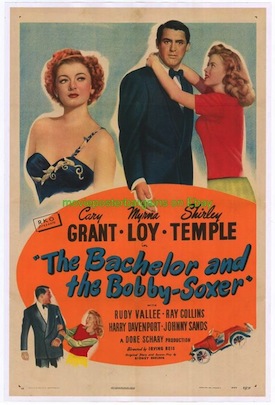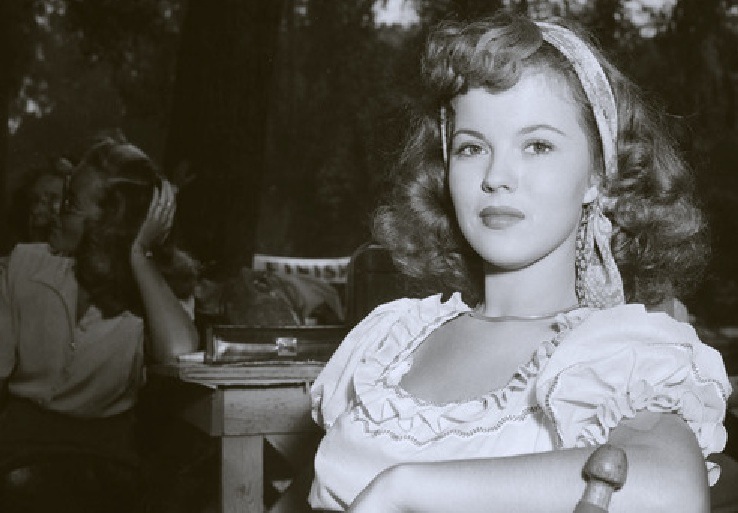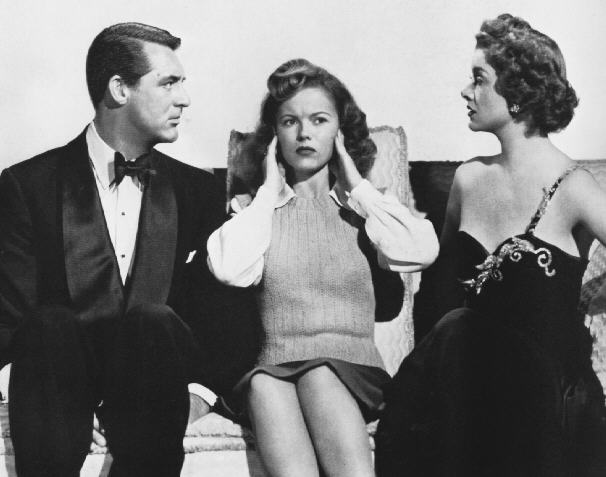With the unexpected death last night of screen icon Shirley Temple, a lot of attention is being paid to her dazzling movie career during the Great Depression. “As long as we have Shirley Temple,” President Franklin D. Roosevelt declared in 1935, “we will be all right.” Temple was all of six at the time — the most famous child in the world and already the recipient of a special Academy Award.
Temple starred in countless films through the 1930s and an entire industry was built up around her. But as many child actors have learned before and since, growing out of your toddler years does not always do wonders for your movie career. By the time she reached the awkward age of 12, Shirley Temple was all but through with the movies. Her parents sent her to a girls’ school in Los Angeles while 20th Century Fox, the studio where Shirley had become an institution, repurposed the special bungalow that had been built exclusively for the young star.
At attempted comeback at MGM didn’t pan out as hoped. Shirley was signed to co-star with Mickey Rooney and Judy Garland in some of their popular musicals but at the last minute Shirley’s protective mother had second thoughts, as did the studio when they realized that Shirley was now taller than Rooney. The only MGM film Temple ended up making at the studio was the mediocre Kathleen. She tried again the following year at United Artists in Miss Annie Rooney, a remake of the silent film that was a great success for Mary Pickford. But this film was also a critical and box office failure, noted solely for the fact that Temple received her first on-screen kiss (from former child star, Dickie Moore) in the film. Following this disappointing experience, Shirley Temple retired again, focusing on school and other activities.
After two years, however, producer David O. Selznick took an interest in the adolescent Shirley Temple and she decided to try one last time. It is during this period that Temple made, in my opinion, three of the best films of her career: Since You Went Away (1944), a moving World War II drama directed by John Cromwell about the women back on the homefront with Claudette Colbert and Jennifer Jones; I’ll Be Seeing You (1944), directed by William Dieterle and co-starring Ginger Rogers and Joseph Cotten; and my personal favorite, The Bachelor and the Bobby-Soxer (1947), directed by Irving Reis and co-starring Cary Grant and Myrna Loy.
 I happened to watch The Bachelor and the Bobby-Soxer again just a few days before Shirley Temple died. It is a spectacularly entertaining film despite the occasional ick factor of a plot that revolves around 43-year-old Cary Grant pretending to be 17-year-old Shirley’s suitor. This is a misguided attempt by Shirley’s family members to help the young girl get over her crush on the older man. Of course the plan backfires until the end of the film when the girl is convinced by her uncle that her sister Myrna Loy is so over the hill (Loy was in her early 40s) that Shirley needs to “give” Cary Grant to her because it’s Myrna’s last desperate chance to find a mate! Sidney Sheldon won an Oscar for his screenplay for this film and it’s a beaut, including this wonderful word play between Grant and Temple that snakes its way through the film:
I happened to watch The Bachelor and the Bobby-Soxer again just a few days before Shirley Temple died. It is a spectacularly entertaining film despite the occasional ick factor of a plot that revolves around 43-year-old Cary Grant pretending to be 17-year-old Shirley’s suitor. This is a misguided attempt by Shirley’s family members to help the young girl get over her crush on the older man. Of course the plan backfires until the end of the film when the girl is convinced by her uncle that her sister Myrna Loy is so over the hill (Loy was in her early 40s) that Shirley needs to “give” Cary Grant to her because it’s Myrna’s last desperate chance to find a mate! Sidney Sheldon won an Oscar for his screenplay for this film and it’s a beaut, including this wonderful word play between Grant and Temple that snakes its way through the film:
Grant: You remind me of a man.
Temple: What man?
Grant: A man with a power.
Temple: What power?
Grant: The power of hoodoo.
Temple: Who do?
Grant: You do!
Temple: Do what?
Grant: Remind me of a man…
I love the beginning of the film that is based entirely around the concept that we will all be flabbergasted when the “Judge Turner” that we keep hearing about is actually Myrna Loy. OH MY GOD! THE JUDGE IS A WOMAN? HOW CAN THAT BE? Yikes. When Myrna puts on her judge’s robes for the first time in the film, her uncle remarks, “In walks a woman, out walks a judge.” On the other hand, at least they showed a smart female judge in 1947 who was unmarried and in her early 40s! And unlike many such such stories during that era, they never made Loy give up her high-powered job, even when she did manage to land Cary Grant. Progress!
Do you yourself a favor and watch The Bachelor and the Bobby-Soxer in its entirety. The film also features Rudy Vallee, Hary Davenport, and Veda Ann Borg.


